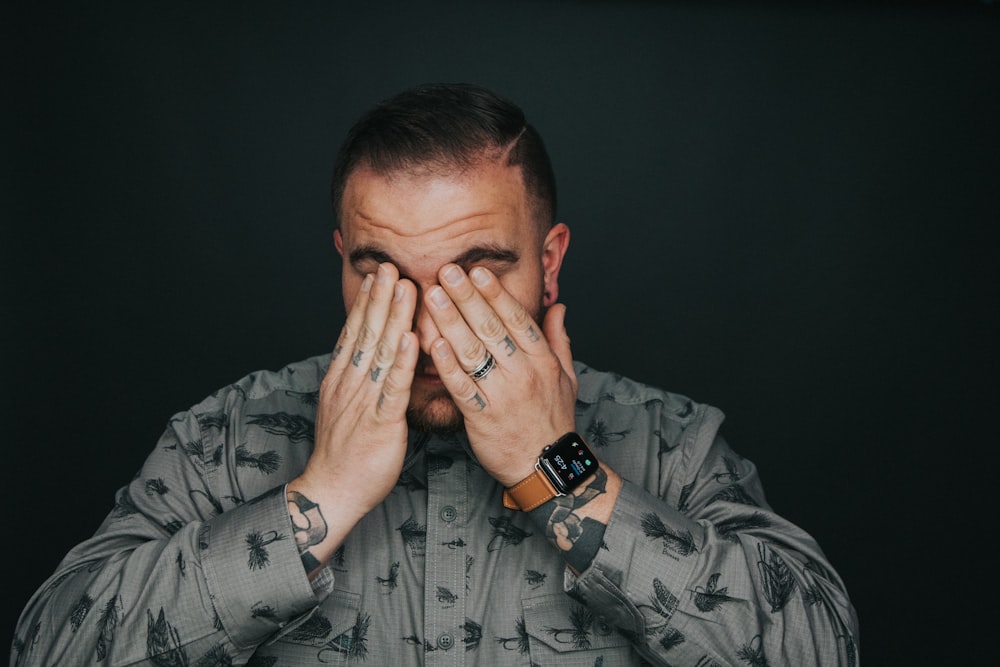
Headaches are one of the most common pain and discomfort complaints around the world today, but there are many different types of headaches, caused by a variety of factors. From stress to dehydration, it’s important to keep track of what causes your headaches, so that you can take preventative measures.
Over 75% of adults worldwide have experienced at least one headache within the last year. Though commonplace, headaches can be complex, as they have a range of causes and symptoms.
According to the International Classification of headache disorders, there are over 150 different types of headaches with medical definitions. However, some types of headaches are much more common than others.
Most types of headaches are classified as either “primary” (not caused by another condition), or “secondary” (prompted by another underlying medical issue). Some headaches are simple and short-lived, prompted by stress, tension, or physical exertion. Other types of headaches, including migraines and cluster headaches, can be more severe and long-lasting, as well as harder to get rid of.
Being able to recognize what kind of headache you’re dealing with, and what might have caused it, could mean you can seek a solution to your problem more rapidly.
Let’s explore the different types of headaches, their causes, and your treatment options.
1.Migraine
A migraine is a more severe form of headache, usually characterized by intense and throbbing pain on one side of the head. People with migraines can often experience heightened sensitivity to light, sound, and smell. Unlike other less severe types of headaches, the pain of a migraine headache can be debilitating. Vomiting and nausea are also common.
Approximately 25% of people experience an “aura”, or symptoms of visual and sensory disturbances before the migraine headache begins. You might notice partial vision loss or muscle weakness, flickering lights, or tingling. Aura symptoms can also be a sign of a stroke, and may require medical attention.
While we don’t fully know what causes all migraines, some researchers believe this condition could be genetically predisposed, and may be more common in people with epilepsy and depression. Migraine triggers may also include:
- Sleep disruption
- Dehydration or hunger
- Certain foods and medications
- Stress and anxiety
- Loud noises and bright lights
Treatment options usually depend on various factors, including the severity of the migraine, but can include medications such as triptans, NSAIDs, and antiemetics. Resting in a quiet and dark place and drinking plenty of water is often helpful.

2.Tension headaches
Tension headaches affect most of us at some point or another. They often involve constant dull pain on both sides of the head, tenderness in the face, neck, head, and shoulders, and a sense of pressure behind the eyes. You may be sensitive to light and sound and experience symptoms for between 30 minutes and several hours.
Tension headaches are also known as stress or muscle contraction headaches.
The causes of tension headaches are still unclear, but many experts believe stress, anxiety, and depression are common triggers. Other potential causes may include:
- Dehydration
- Lack of exercise
- Poor sleep quality
- Posture problems
- Eye strain
- Skipping meals
The most common treatment for a tension headache is OTC painkillers including ibuprofen, aspirin, and acetaminophen. Lifestyle changes such as getting more sleep, exercising, and managing stress and anxiety can also be helpful.
3.Cluster headaches
Severe, recurring, and often debilitating, cluster headaches can be a significant problem. Cluster headaches are 6 times more likely to affect men than women, and they’re described as an intense or piercing pain around or behind the eyes. Other symptoms can include watering eyes, a runny or blocked nose, or a sensitivity to light and sound.
Cluster headaches usually occur suddenly and without warning, lasting between 15 minutes and several hours. Some people suffer from several attacks a day, which happen in daily “clusters”.
The cause of cluster headaches still isn’t certain, but they do appear more likely to influence smokers. People can also suffer more significantly from cluster headaches when drinking alcohol.
Treatment options involve reducing the severity of attacks with medications such as melatonin, lithium, and sumatriptan. Deep brain stimulation, vagus nerve stimulation, and oxygen therapy have also shown promise in treating these headaches.

4.Exertion headaches
Caused by strenuous physical exercise, exertion headaches are usually short lived, but can last for up to 2 days in some patients. Most people experience a throbbing pain throughout various areas of the head, as well as common migraine symptoms, including sensitivity to light. Exertion headaches are more common in people with a family history of migraines.
Exertion headaches can be caused by all forms of strenuous exercise, including running, jumping, sexual intercourse, and weight lifting. They can also come from excessive periods of coughing and sneezing, which places pressure on the skull.
If you’re suffering from exertion headaches suddenly, it’s a good idea to speak to a doctor, as they can sometimes be a sign of something more serious. Treatment options can include OTC pain relief, beta-blockers, and indomethacin.
5.Hypnic headaches
A rare condition common among older people (aged 50 and over), hypnic headaches are often referred to as “alarm clock headaches” because they can wake you up when you’re sleeping. Usually involving mild to moderate throbbing pains in both sides of the head, these headaches can last for up to 3 hours. They also cause sensitivity to light and sound, and nausea.
Some of the more mysterious headaches in the world today, hypnic headaches have no known cause, and there aren’t any specific triggers associated with them. Though these headaches aren’t considered dangerous on their own, they can be a sign of something more serious.
Treatment options can include medications such as indomethacin and lithium.
6.Dehydration headaches
Often described as a dull throbbing pain, dehydration headaches can become severe depending on how much your body needs water. Some people experience pain all over their head, and may find the issue gets worse when they try to move or bend.
A dehydration headache happens when your body doesn’t have the right amount of electrolytes and fluid to function properly. When you’re severely dehydrated, the brain can temporarily contract, which causes the brain to pull away from the skull and cause pressure.
The most common factors increasing the risk of dehydration headaches include:
- Extreme heat and sweating (or fever)
- Excessive urination
- Vomiting and diarrhea
The best way to prevent and cure a dehydration headache is with plenty of access to water and electrolytes. If you’re severely dehydrated, it’s best to sip your water to reduce the risk of nausea and vomiting.
7.Medication-Overuse Headache
Sometimes known as “rebound headaches”, medication overuse headaches are a common form of secondary headache – caused by other factors. The “MOH” can often cause regular and consistent pain, similar to a migraine or tension headache.
These headaches are commonly caused when people who have become reliant on a certain medication begin to cut down their use. You can also experience these headaches by using too much of certain medications, such as:
- Opioids
- Triptans
- Acetaminophen
- NSAIDs (ibuprofen)
The only treatment for this condition is to stop taking the medication causing the headaches gradually. Your doctor can often devise a plan to ease the withdrawal process. Doctors can also provide medication to help reduce vomiting and nausea.

8.Sinus headaches
Sinus headaches generally occur as a result of a sinus inflammation condition. In certain causes, you may experience these headaches after an infection or allergic reaction. Many people experience throbbing pains around the cheeks, eyes, and forehead. The pain can worsen with movement and spread to the jaw and teeth.
Sinus headaches aren’t as common as many other headaches on this list. If there are no nasal symptoms associated with the headache, you may simply be experiencing a migraine attack.
Sinus headaches usually go away when the sinus problem is treated, using rest, fluids, and OTC pain relief, as well as nasal decongestants. Antihistamines and steroidal sprays can also be useful for some people, depending on the underlying cause of the headache.
9.Caffeine Headaches
Caffeine can be a useful substance at times, but a high intake of caffeine can also lead to some unwanted symptoms. Many people suffering from these kinds of headaches experience difficulty concentrating tiredness, irritability, and poor mood.
The effects of caffeine vary from one person to the next. You can check your sensitivity to caffeine in a DNA test, to see if you’re likely to respond badly. However, more than 400mg a day is usually more likely to cause tension headaches. If you have more than 200mg of caffeine per day regularly, you might also experience withdrawal-style headaches when you cut down.
Limiting your exposure to caffeine and making sure you stay well hydrated are often the best ways to deal with headaches caused by this substance.
10.Menstrual headaches
Headaches can often be caused by changes to your hormone levels. When going through menstruation, changes in estrogen levels can sometimes prompt uncomfortable side-effects. Symptoms are similar to a migraine, without the aura, and they can last for the whole cycle.
Menstrual headaches usually happen 2 days before or 3 days after a period, as well as during ovulation. Similar hormone-related headaches can also come from menopause, pregnancy, and taking medication such as oral contraceptives.
Usually, the treatment for menstrual headaches is the same as the therapy for a migraine, including NSAIDs, and getting plenty of rest. You may be able to look into hormonal therapy and alternative contraception plans too.
11.Hangover headaches
One of the most common headaches among people who drink alcohol, hangover headaches can be very similar to a migraine, causing extreme throbbing pains and sensitivity to light. The pain can happen on both sides of the head and may cause nausea.
Hangover headaches are caused by high levels of alcohol consumption, as well as dehydration, which is worsened by drinking alcohol. Your risks are higher if you’re drinking on an empty stomach, and not balancing your alcohol intake with water.
There’s no treatment for a hangover, but you can reduce your symptoms by drinking plenty of water and using OTC painkillers.
Are Headaches Dangerous?
It’s certainly dangerous to drive or operate machinery if you have a bad headache. In general, headaches are very common and come in many different forms, as well as different levels of severity. Most people can manage their discomfort with simple pain relief medications such as Advil, and rest in a dark room. However, it’s best to speak to a doctor if your headache is caused by a significant blow to the head, or is extremely severe. If you’re having extra symptoms, including blurred vision, problems with your balance or speech, or persistent vomiting, seek medical attention immediately.
Children with recurring headaches should also speak to a doctor early, as this could be a sign of an underlying medical condition.
If you have a bad headache, it’s best to stay home, drink lots of water, rest, and avoid any strenuous activities. Anyone getting consistent migraines should speak to their doctor.






